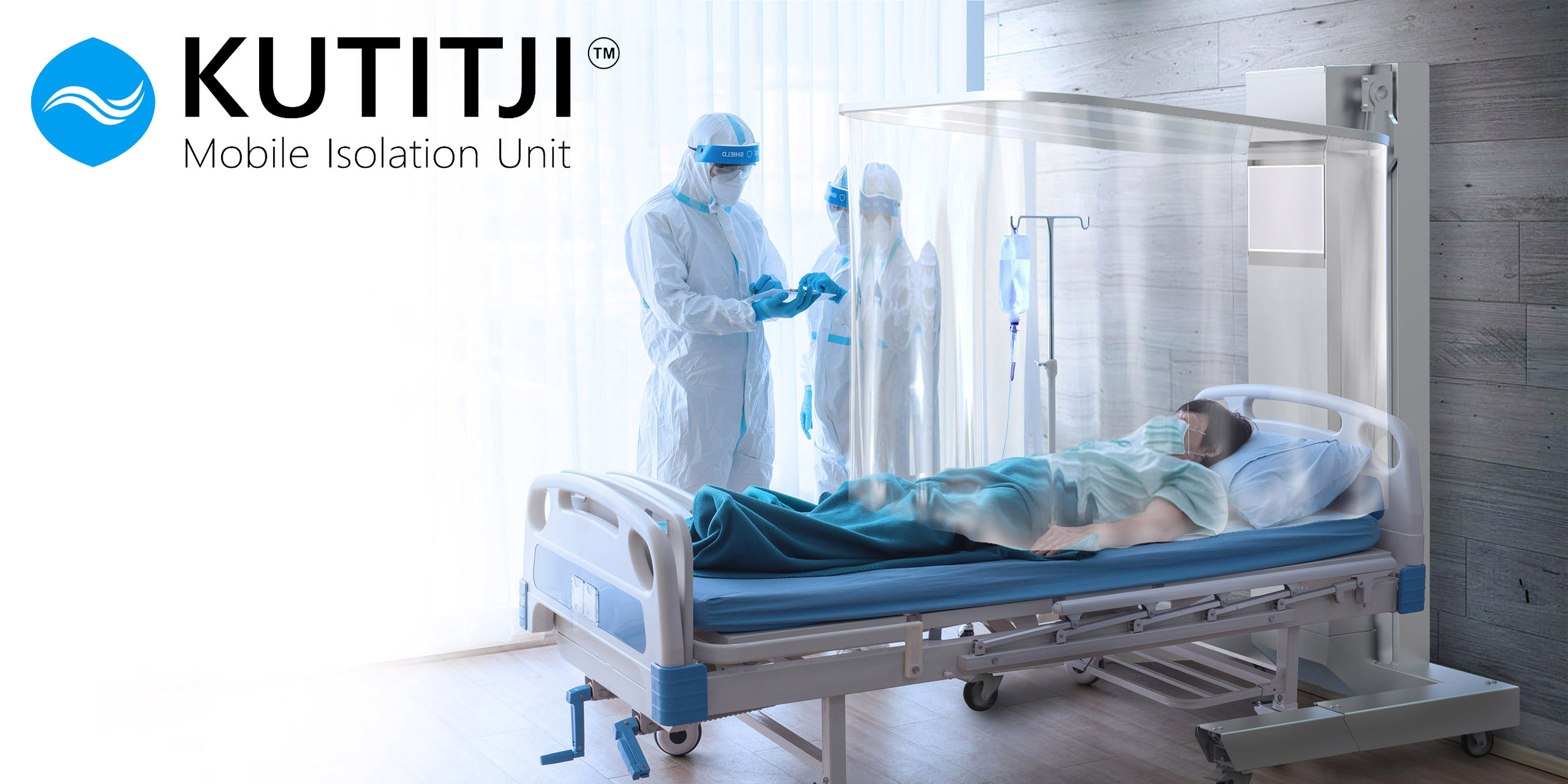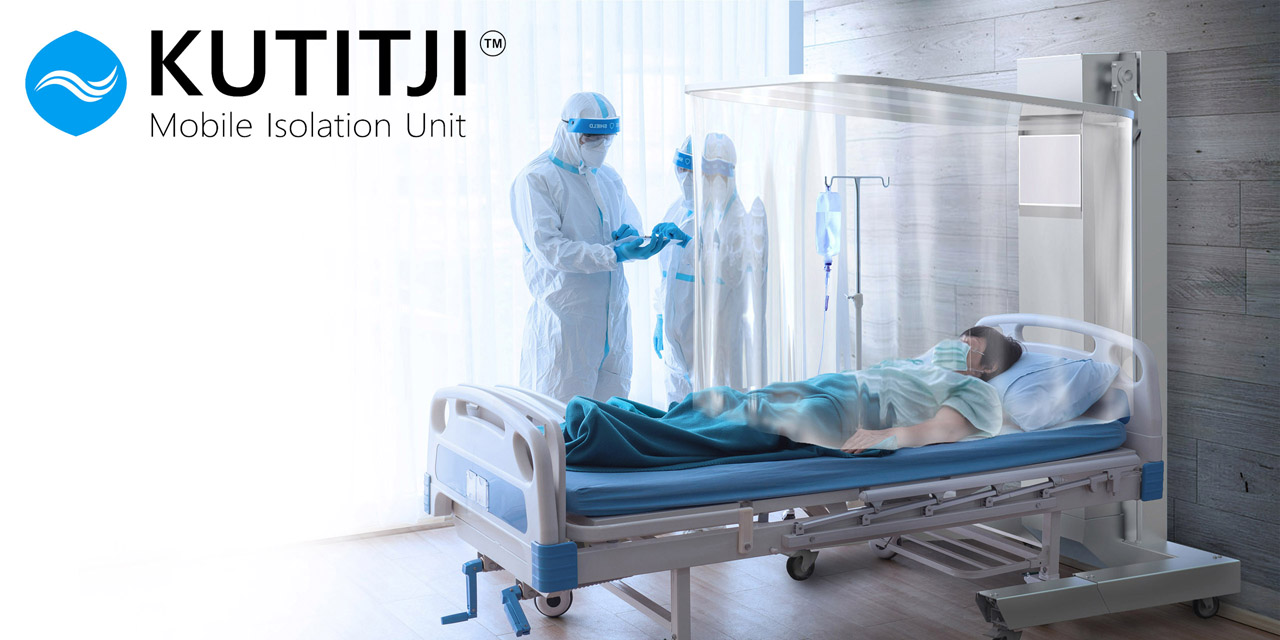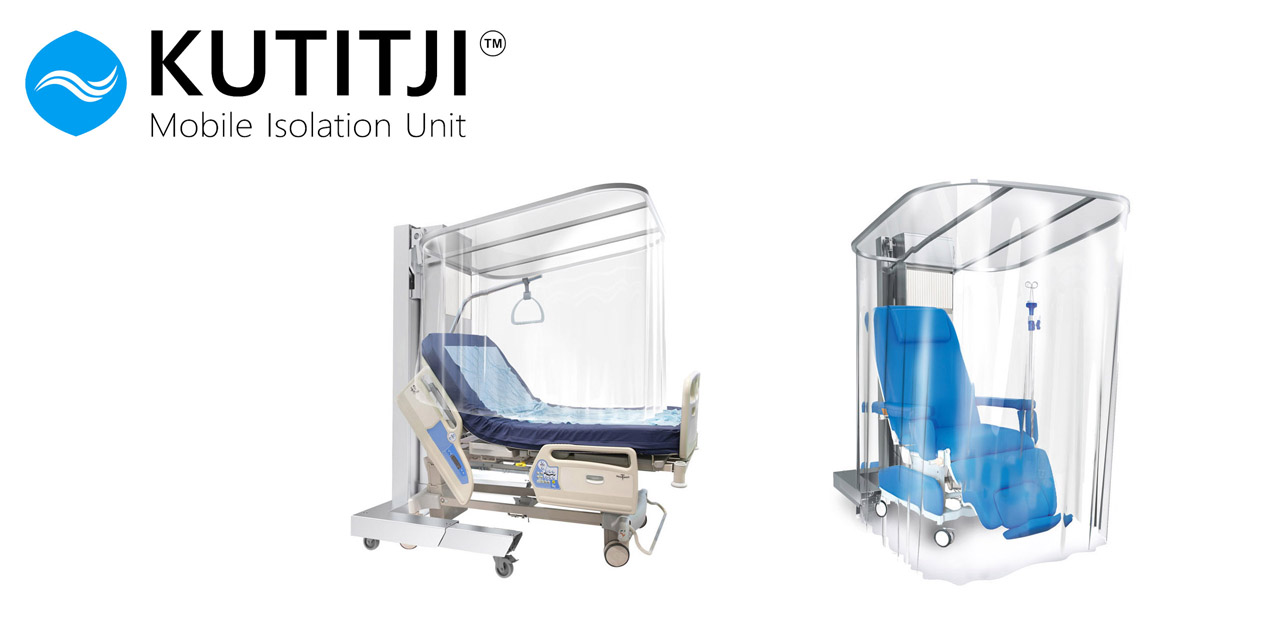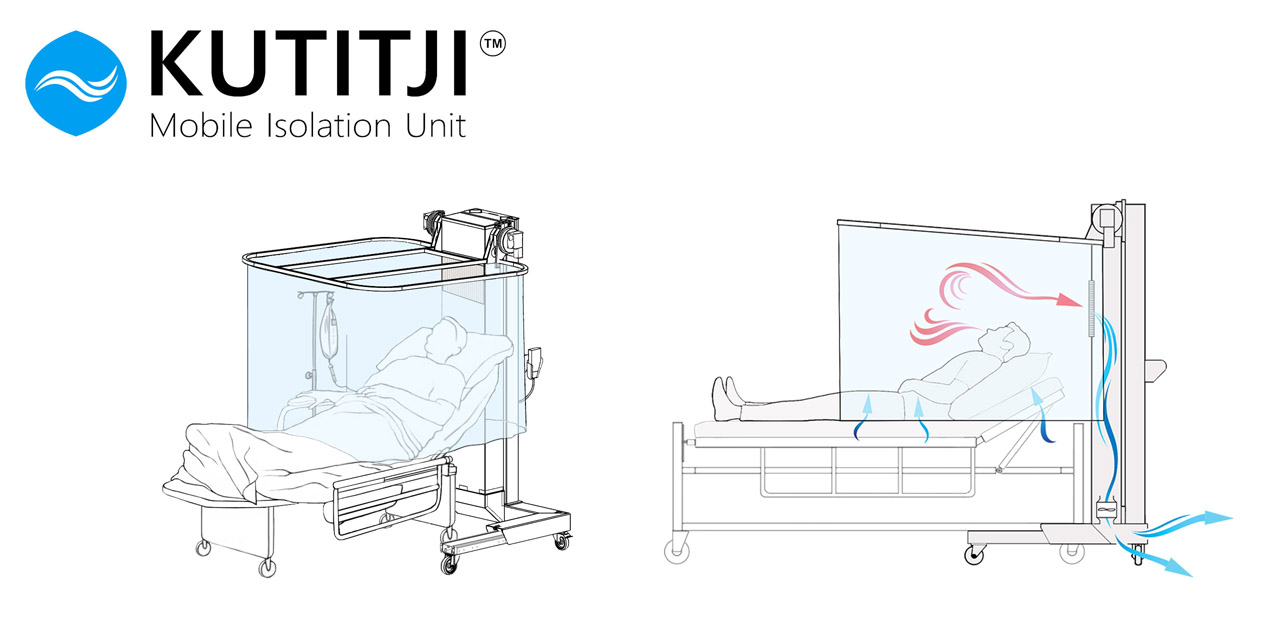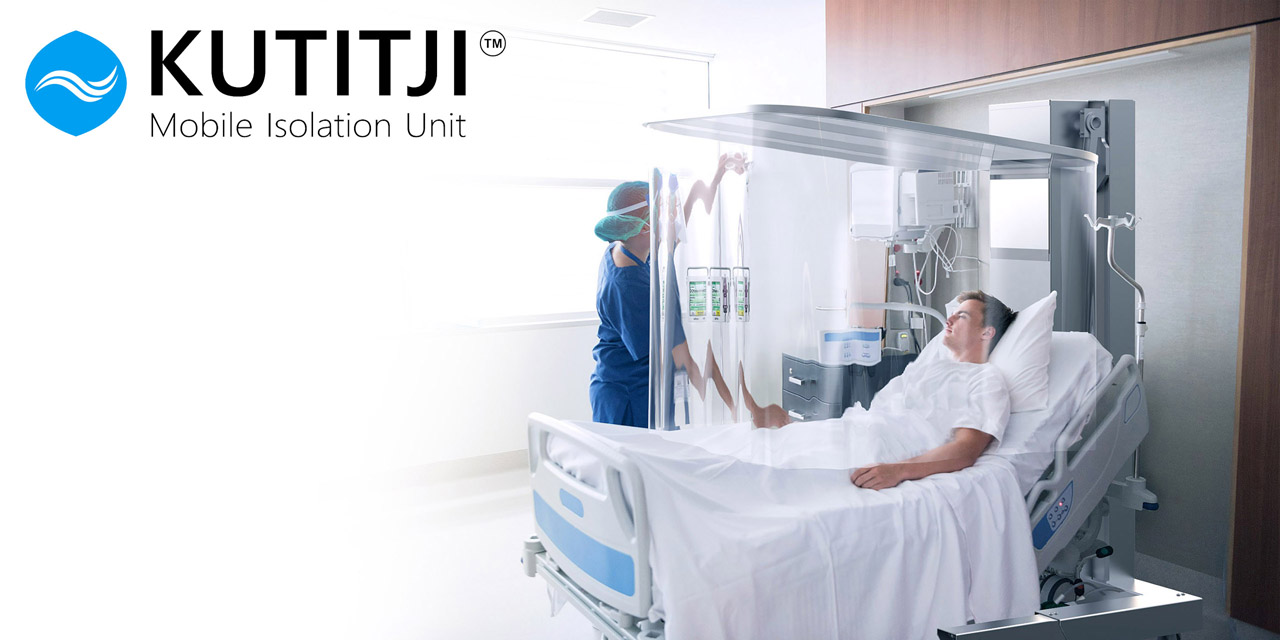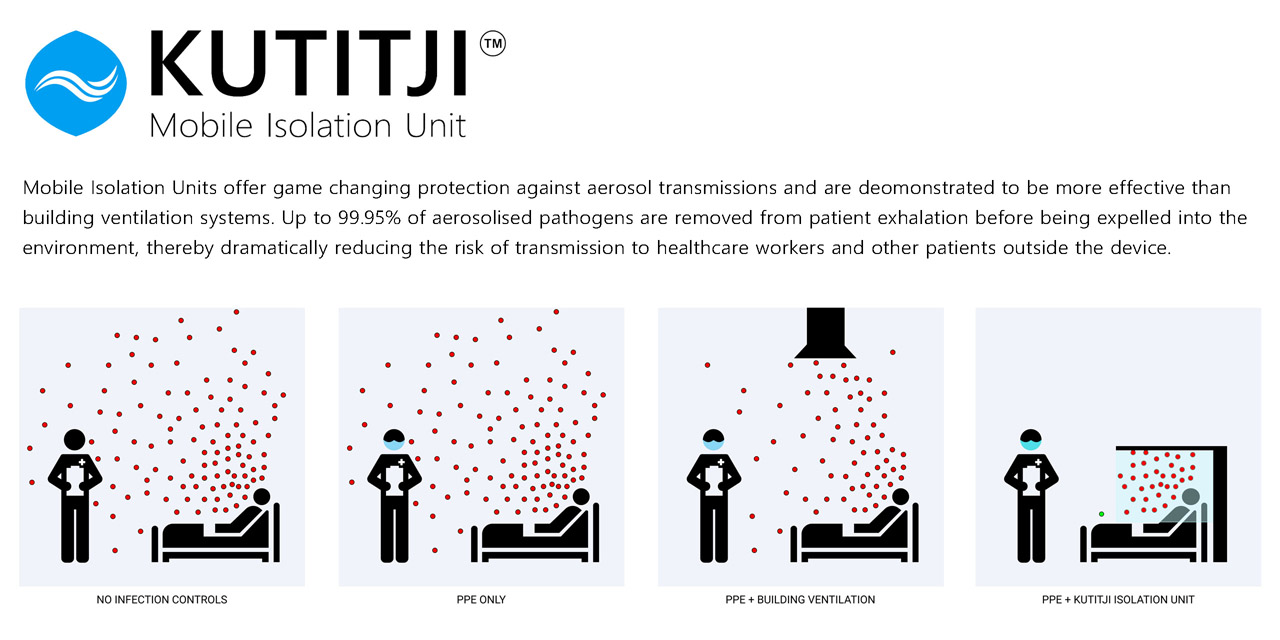In September 2020, Health Forge was assigned to develop a mobile isolation unit that improves on the concepts that could be found in the global marketplace.
Existing isolation solutions in healthcare include isolation capsules for portable stretchers, in-situ isolation rooms and marque tents. Prior to KUTITJI there were no commercial solutions for beds and chairs with examples limited to rudimentary pram hoods and makeshift Perspex boxes.
The initial design brief asked for an isolation solution for a patient on a dialysis chair that could withstand Australia’s harsh outback conditions and serve indigenous communities where aboriginal people require dialysis treatment.
Health Forge have exceeded this design brief and in doing so, achieved a world first and addressed a global gap in mobile isolation for beds and chairs.
The KUTITJI also exceeds the design brief beyond use for Australian outback communities, and into potential Asian, European and US markets. KUTJTI is suitable for underdeveloped nations where significant health impacts can be achieved in controlling COVID-19 transmissions.
Health Forge collaborated with healthcare experts to understand the problem space, identify user needs, pain points, analyse market equivalents and implement regulatory compliance. The team worked with researchers at Curtain University Perth, Alice Springs Hospital, Northern Hospital in Epping and the Northern Territory Purple House indigenous dialysis organisation.
Design parameters included:
- Health and safety improvements
- Regulatory compliance/risk mitigation
- Intuitive and safe usability
- Critical component redundancy
- Low total cost of ownership
- Scalable manufacturing efficiencies
Design inputs included:
- Usability and safety
- Patient comfort/safety
- Accessing patients whilst in use
- Setup, pack down, cleaning
- Mobility, service, storage
- Packaging, logistics
The design process produced initial assumptions and concepts that were verified with user groups and validated via prototypes. Engineering CAD designs progressed through critical reviews to confirm all user needs were addressed.

